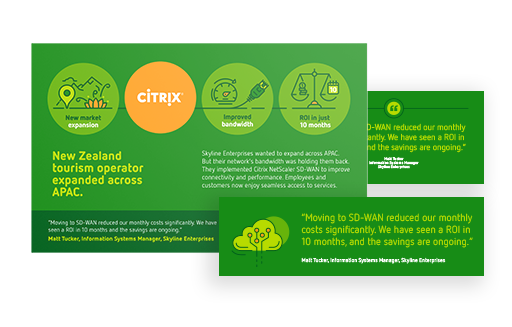.png?width=900&height=506&name=_W4U%20Advohub%20social%20promo%20templates%20(3).png)
Adopting a customer-centric culture, like any cultural transformation, is a deep, dynamic, and continuous process that requires the active participation of the entire organization. Having the support of the board of directors and building a team of change agents will not guarantee success. On this journey, communication becomes the backbone that supports each step towards a customer-centric culture.
In this article, we will explain the importance of communication. Through success stories, we will first address practical strategies for each level of the organization and tools that will become your key allies to communicate the cultural transformation through objectives.
1. The Strategic Importance of Communication in Cultural Transformation
Communication is the element that shapes and guides cultural transformation. In times of structural change, information flows intensify and accelerate due to uncertainty and fear of novelty. More than ever, effective communication is necessary for our teams to commit. Developing a communication strategy for transformation is complex but much simpler when you apply a methodology. The 4 Cs of communication can make it easier for you to create a plan that will help you achieve your goal:
Comprehension:
First, we must understand the complexity of the transformation in which the company is immersed. Knowing the gap between the current state and the Ideal will allow us to understand how profound the change is and how it affects the different members of the organization: we may have departments that are practically unaffected by the transformation and others that require changes.
Conviction:
We must be able to create a desire and need for change. To achieve this, it is crucial to align the objectives and purposes of all members, highlight the benefits of change, and adapt communication to different audiences. Communicating transformation is not a one-day thing. We must be consistent and periodically communicate the status of our transformation towards a client-centric organization.
Conversation:
In addition to the story of the transformation, we need to talk and generate spaces that allow us to understand the whys and wherefores of the transformation. It is not about launching a communication or creating a big event to explain the need for change. Transformation involves listening and learning. Considering the collaborators' perspectives will allow you to adjust your strategy, involve them in the change, and secure their commitment.
Contagious:
Because we have the unavoidable need for contagion, the change is exponential, and it is necessary to amplify the messages and extend them so that all professionals internalize them, understand them, and help us drive change, both inside and outside the organization. Deploy all your resources and adapt your message to the different channels: videos, infographics, and presentations; a transformation requires your entire arsenal.
2. Strategies and Tools to Communicate at Different Levels
What information should be shared with everyone, and what should be limited to certain levels? In what situations is segmented communication beneficial and why? How can messages be tailored to ensure optimal understanding and acceptance? To answer these questions, let's look at some success stories:
Walmart: The famous supermarket chain began a profound change for the LATAM region in 2019. In order to convey the objectives behind the transformation to its thousands of collaborators, it proposed clear, simple, and easy-to-remember communication:
1 - 2 - 4: #1 Client and Talent Preference, #2 Player in the Market, 4% Operating Income.
With this strategy, Walmart ensured that 89% of its employees knew and understood the company's strategic priorities in the coming years and the reason for the transformation—a clear example of WHAT needs to be communicated to the ENTIRE organization.
Volkswagen: the automotive brand faced the challenge of boosting sales and profitability with a sustainable business model while maintaining its leadership in quality and adopting a greater focus on innovation.
To do this, it segmented its communication to different public objectives: managers received executive reports, analysts participated in weekly meetings to learn about progress according to their sector, and operators accessed the information through videos transmitted on screens placed, especially in the plants and in the advertisements published on the billboards.
Communication is not a one-size-fits-all approach; it adapts to each organizational level's needs and contexts. Also, not everyone needs to know everything all the time. Volkswagen's strategy ensured that each level of the organization received information tailored to their responsibilities and perspectives and avoided overwhelming employees with irrelevant information.
3. OKRs and Balanced Scorecard: Tools to Measure and Communicate Objectives
Setting goals and measuring progress is part of the communication strategy on our path toward a customer-centric culture. Google has used OKRs for years to drive its innovation-focused culture. They have kept all levels focused on shared goals by breaking down key objectives and key results. On the other hand, Siemens implemented the Balanced Scorecard to communicate progress in its transformation towards a more agile and customer-oriented culture. Clear metrics allowed employees to understand their impact on the overall transformation.
Whatever your choice, both OKRs and the Balanced Scorecard become potent instruments for translating your customer-first vision into tangible actions. While the Objective Key Results are newer, focused on the short term, and have an aspirational charge that matches them with the mission and purpose of the company, the Balanced Scorecard is a traditional tool that tells the story behind the strategy by articulating the cause and effect relationships between different departments.
4. Conclusions
In short, effective communication is the master key in any cultural transformation effort. Each element helps build a customer-centric culture, from differentiated strategies to measurable tools. By adopting these practices and understanding the importance of communication, you will not only be able to embark on the journey of cultural transformation but also navigate it successfully.







